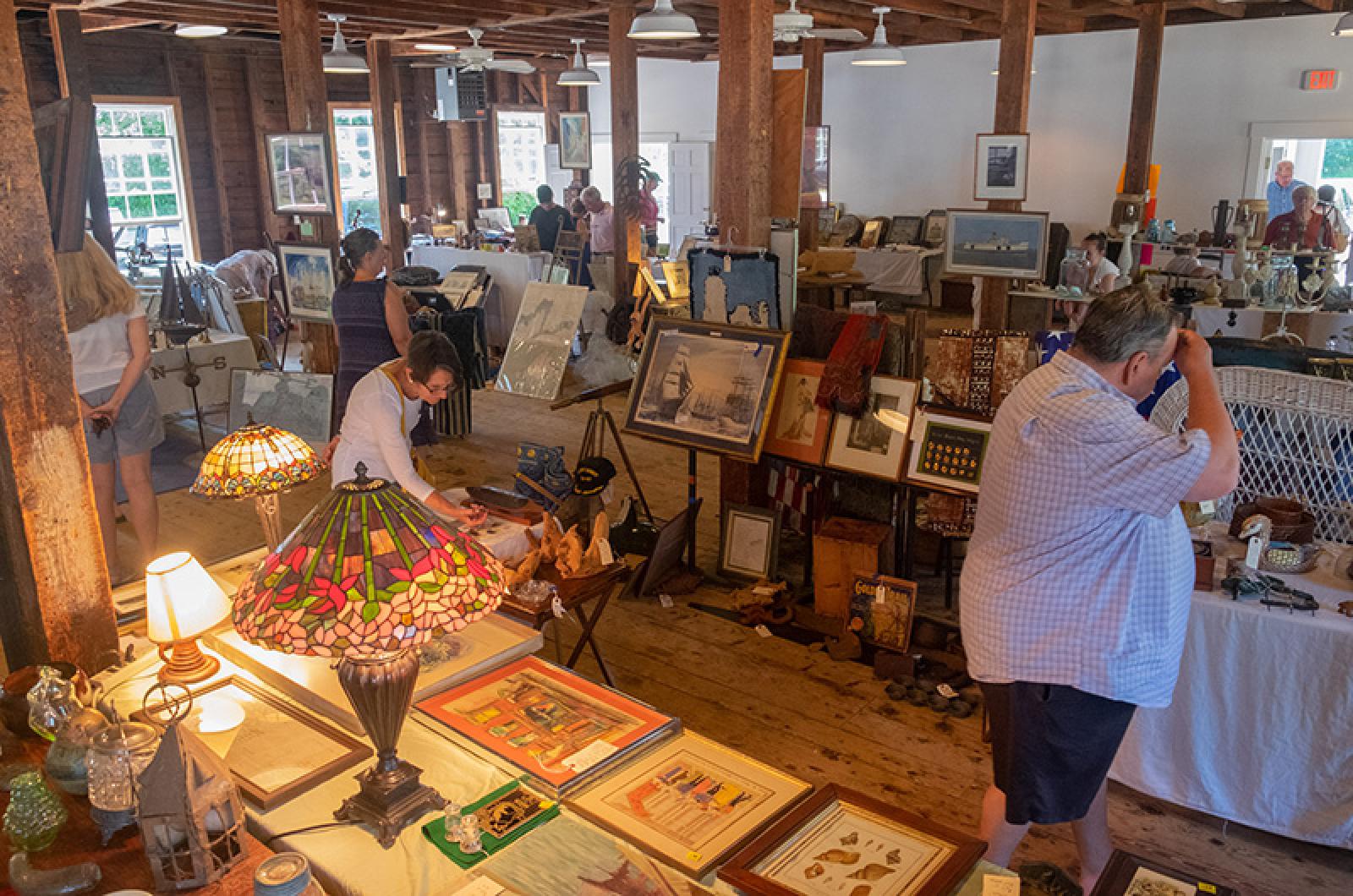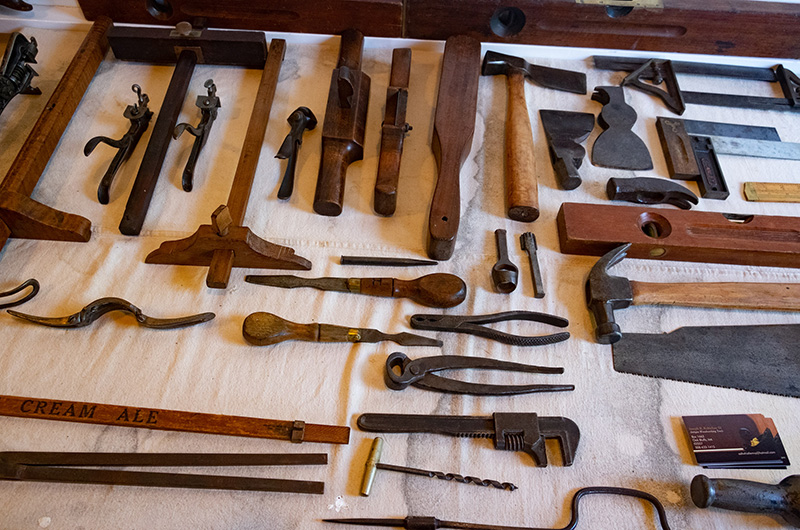Wandering around the Grange Exchange and Antique Market in West Tisbury in a fading Friday afternoon light is like traveling back in time. That’s the point.
Ron Gamba and Lucy Menton began the Grange Antique show back in 1995. Though the name has changed slightly, the core group of vendors still meet every Friday from 9 to 3 p.m., to sell their wares and reminisce.
The vendors are separated by the building’s support beams, which has held a roof over the Grange Hall since 1859. Some include rugs and coat racks, making each space feel like someone’s home. Others hang paintings and taxidermied birds. All is for sale.
Vendor Tom Underwood pointed to a framed drypoint etching. The tag read “Stunning 1926 etching of Chilmark’s Old Clay Pit (North Road, near Roaring Brook.)” On the back of the etching there is a handwritten note from the time of the etching’s creation.
A history professor and collector, Mr. Underwood held the etching in his hands. “I just can’t figure it out,” he said. “It’s like a piece of unremembered history. I’ve never seen anything like it. Who wrote this? Where was this old barn in Chilmark. What’s there now?
A few aisles down, Joseph B. Robichau stood next to his table full of planes, saws, hand cranks and levels. He picked up the plane. “I bet you don’t even know what this is. Most don’t. But you’re closer to the work this way. You can really feel what you’re doing.”
In the atrium, Randi Walsh presented a mixture of antique and vintage jewelry. “Antique is over 100 years old. Some of these pieces are antique. Others are what I like to call previously loved. Each piece has a story.”
That morning, a couple from California found their wedding bands at Ms. Walsh’s table.
“The idea is that there is something here for everyone, and that you can find anything” said Grange Exchange organizer Carol Williamson.
Finding something is a part of the fun, as is preservation.
“Buying something created in the past is environmentally sustainable,” Ms. Williamson said. “We don’t always have to buy new things. There are treasures here.”





Comments
Comment policy »